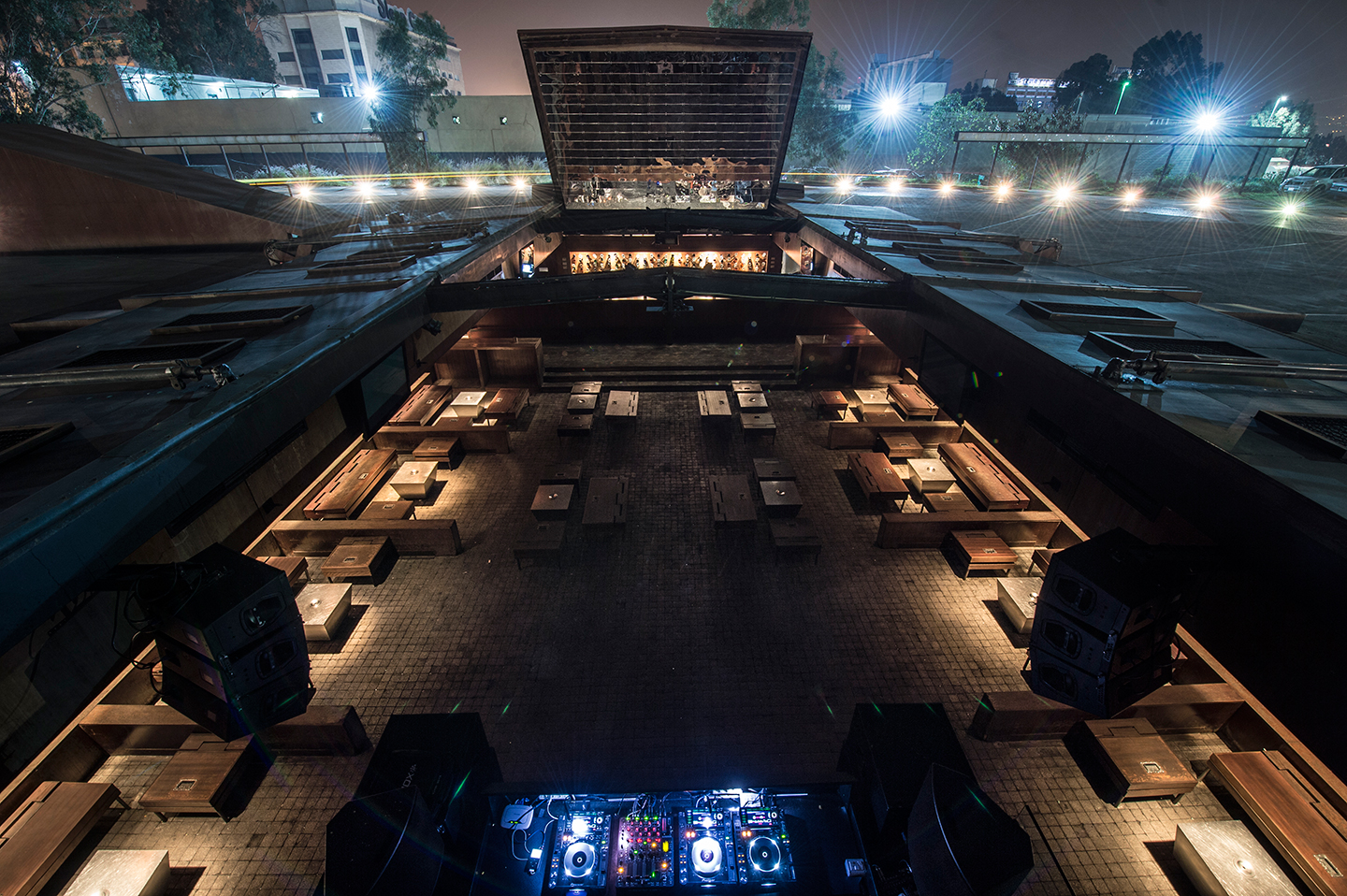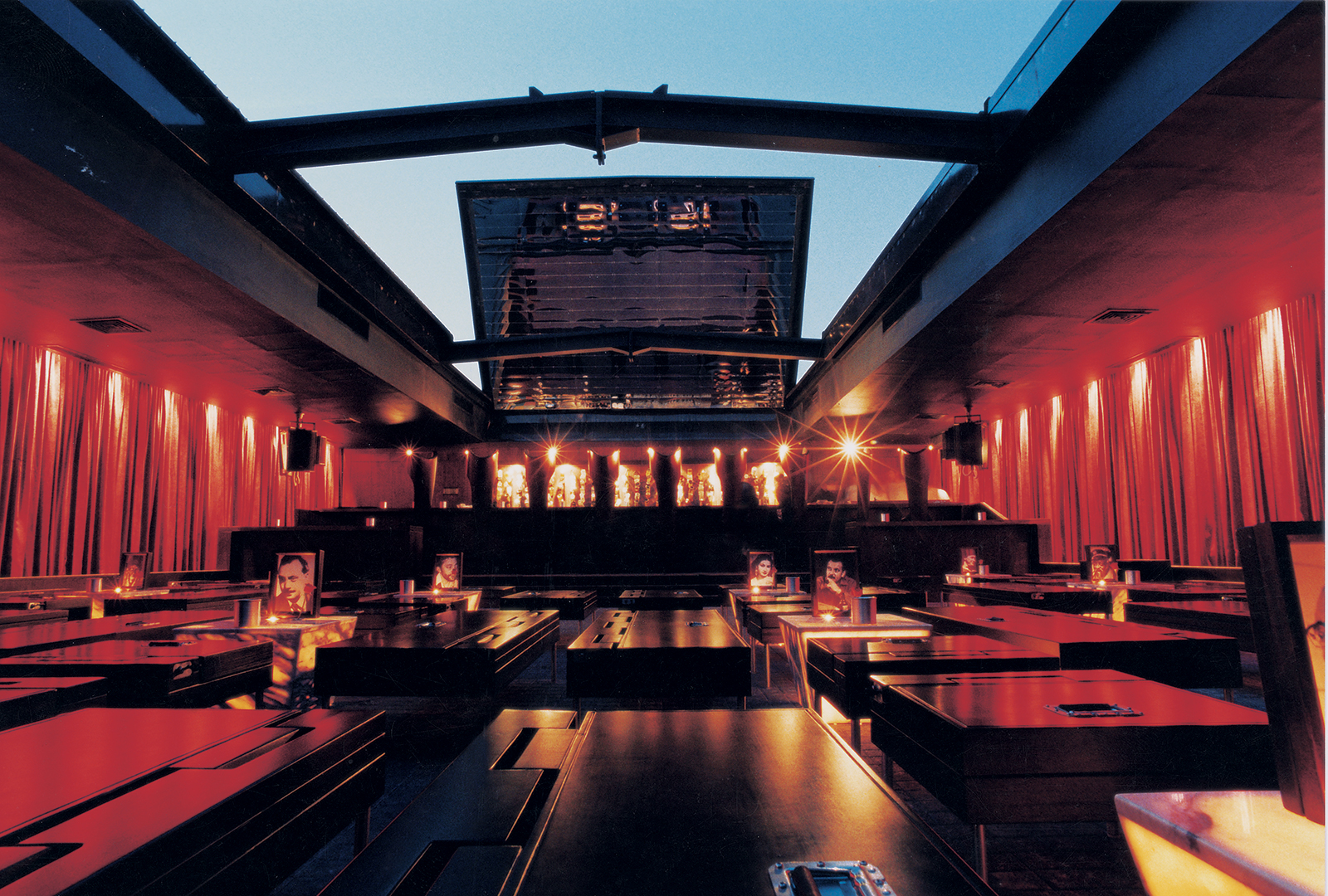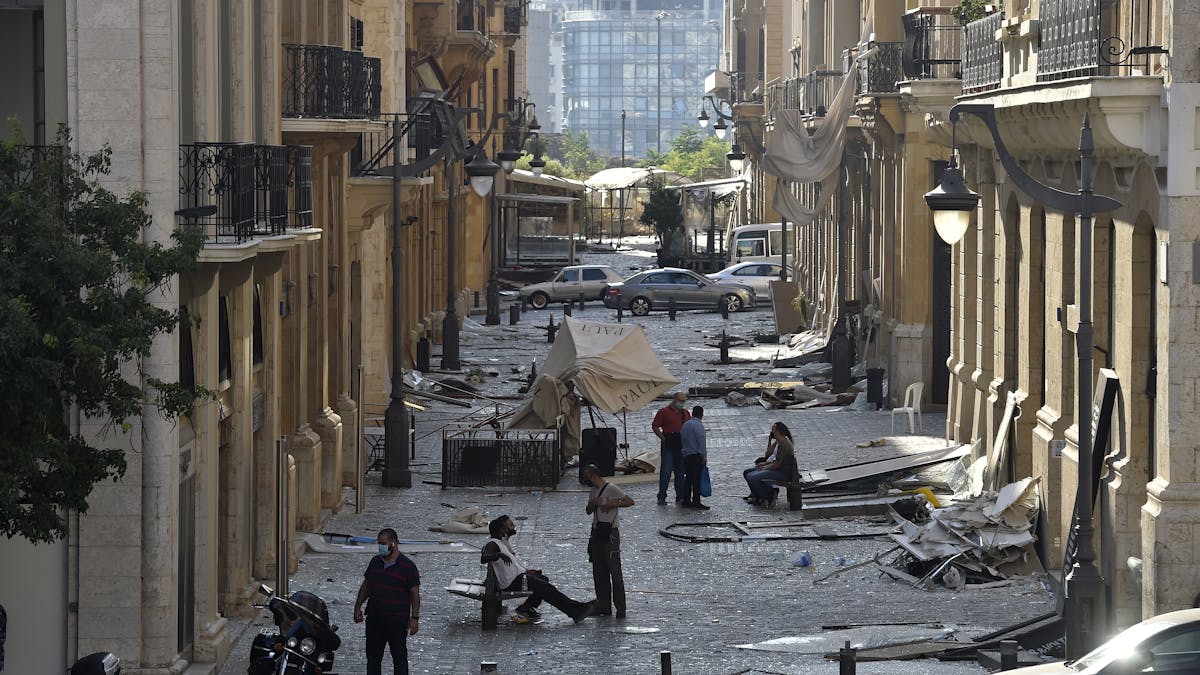
With an aesthetic between the military and Gothic cathedral, this place designed by Bernard Khoury is also a temple of sound, an icon of Beirut, Lebanese modernity and a reminder of the meaning of the neighbourhood it occupies: the Cuarentena neighbourhood.
And in the end, only one remained. Beirut, a city deeply affected by history, suffered unprecedented devastation on Tuesday, August 4.
More than 2,700 tons of ammonium nitrate stored in a port warehouse exploded in the middle of the afternoon causing a “cyclone of broken glass”, according to witnesses told the BBC, at least 158 dead and around 5,000 injured. The 43-meter-deep crater caused by the blast swallowed up hundreds of buildings. Among them, most of the nightlife venues in the port area. All but one: the B018. The eternal survivor of the Beiruti night. A place that always stands. Even if it’s underground.

A businessman of the night told Martin Chulov, a journalist for The Guardian, that “the whole district has been wiped off the map.” Venues like The Gärten, AHM, The Grand Factory or The Ballroom Blitz have been badly damaged or practically reduced to rubble. Even The Egg, a former cinema that served as the setting for increasingly popular underground parties, could have been severely affected, according to the electronic music magazine MixMag.
Everything indicates that the efforts of the last couple of years to consolidate a thriving and avant-garde night scene in Beirut have suffered a severe blow. Although, as one of the founders of the Ballroom Blitz, Moe Choucar, explained to MixMag, “it is true that it has affected us, but the damage suffered by our premises is nothing compared to the apocalyptic disaster that has been suffered by the country”. Choucar remembers that now it is not a question of recovering his own business, but of “putting oneself at the service of people who are suffering and helping as much as possible”.
In this broken Beirut again, where even leisure has been blown up, the only B018 remains (almost) intact. Located a short distance from the zero zones of the explosion, in an area where rubble and sinkholes accumulate, the place has resisted because it was conceived from its origin as a bunker. As a stronghold of dance and bomb-proof hedonism. It is the work of a singular architect, Bernard Khoury, a promoter of Lebanese modernity, in love with both the military architecture of the first half of the 20th century and the cathedrals, abstract expressionism and the Gothic subculture.
Khoury defines his aesthetics as a “masochism of disaster”, an attempt to start from darkness and pain to transform them into “true light”. Some of his main works respond to this logic, samples of an uncompromising avant-garde spread among Lebanon, the United Arab Emirates, Armenia, Germany or the Sultanate of Bahrain. The specialised press speaks of him as the bad boy of Middle Eastern architecture.
Lebanese Modernity and Music Therapy
Born in Beirut in 1969, the son of modernist architect Khalil Khoury, Bernard received a BA in architecture from the Rhode Island College of Design and completed his training with a Master’s degree from Harvard University. He is thus a travelled, restless man, a citizen of the world. In 1993 he returned to Lebanon with his bag well loaded with titles, revolutionary ideas and healthy cosmopolitanism. He stumbled upon a country that had left its civil war (1975-1990) behind but was still shattered.
As he told in 2017 in an interview with the newspaper The Wire, the Lebanon that he found upon his return did not even really think about rebuilding itself: “It was content to build a handful of new buildings on the site occupied by those destroyed by the war and return as soon as possible to supposed normality, but without rethinking anything, without considering any honest reflection on the reasons that had led us to the disaster or taking measures to prevent it from reproducing ”.
In this context, the young architect proposed to work only for clients who were in tune with his ideas: if he could not help build a more authentic country, he would at least try not to collaborate with the restoration of the old one. Above all, he wanted to contribute to the birth of “Lebanese modernity, as an alternative to the project of simply transplanting the modern style of the West”.
One of the first customers willing to imagine the Beirut of the future with him was Naji Gebran, owner of a dance hall called B018. In the midst of the civil war in the late 1970s, Gebran had managed to make a name for himself by organising what he called Music Therapy parties at his mansion on the outskirts of Beirut, some 18 kilometres north of the city centre. Hence the B018 thing.
A bunker of hedonism in the ‘Quarantine’ neighbourhood
After turning his private party into a somewhat more formal club and occupying several warehouses on the periphery in successive years, Gebran moved this “clinic of sound rituals” to the Quarantine neighbourhood (Karantina, in local slang), in the south of the area of the industrial port. The neighbourhood owes its name to the period of forced quarantine that was subjected during the time of the French protectorate (between 1923 and 1943) to the Arabs who tried to settle in Beirut, a humiliating procedure that used to be dispensed with Europeans.
In the midst of the civil war, in 1976, the Christian Beiruti militias destroyed the barracks of the Palestinian refugees that had settled in the area, creating an immense site that was used for years as a mass grave. That made it a very valuable environment for local promoters when peace finally came.

Hired by Gebran to build the new B018 headquarters in Quarantine, Khoury wanted to be consistent with the neighbourhood’s sinister history and proposed turning the building into a bunker. A place that did not ignore the surrounding devastation and the scars of war but that, at the same time, protected those who gathered there to dance. Above all, he insisted on giving it an underground and almost clandestine character. For that reason, he buried it under a circular granite plaza, so that no “ostentatious facade” remained on the surface that would have been “like a kind of rhetorical monument and an insult to the history of the neighbourhood”.
Under that concrete surface that serves as a roof (and makes some think of a helicopter landing strip), a place with a capacity for 500 people, military aesthetics and a marked taste for sinister iconography was inaugurated. The floor was made of cement, the furniture was mahogany and, in a masterful detail that gave the building a lot of personalities, the roof was retractable, so that, on special occasions, it could be removed so that the attendees were surprised under the starry sky of Beirut
Khoury had frequented B018 in previous years. It had been impregnated with its rave atmosphere, with a sound offering open to avant-garde electronics and dark-wave pop-rock, but also to Arabic music, acid jazz or World Music. He especially liked its character as an ecumenical place, an island of diversity open to everyone, Christians and Muslims, tourists and locals, Westerners and Arabs. He saw it as the last stronghold of a project of modernity and cosmopolitanism that is at the heart of Beirut but is interrupted time and again by misfortune, sectarianism and blissful geopolitics.
The project was born with a certain vocation for ephemeral architecture. Gebran was used to dealing with the misunderstanding of the authorities and going elsewhere with the music after a few months or a few years. However, two decades later, the club was still there, at the foot of the canyon, transformed into a benchmark of Lebanese nightlife. In 2018, on the 20th anniversary of the inauguration, an internationally established Khoury, owner of his own style, was commissioned to redesign his legendary bunker. He did so by delving into its essence of kitsch, cloudy and macabre space, with an uncomfortable and extreme aesthetic.
The new details reinforce its Gothic bunker and cathedral appearance and also introduce elements reminiscent of slaughterhouses, such as mobile sculptures that hang from the ceiling and are, in Khoury’s words, “like spines of dismembered nets” with which even he can dance as if they were sinister gogós on their platforms. The old wooden furniture has now been replaced by stone podiums, bleachers and steps.
As Khoury told Dezeen magazine in 2019, these changes mark the definitive transition from the place from an ephemeral structure, designed to last a maximum of five years, to a permanent refuge. Wood has been replaced by stone. What was a makeshift den to host raves is now a temple of sound. Religious architecture for those who understand that there is something spiritual about the act of dancing in a city permanently surrounded by disaster. Architecture born from the rubble of civil war and which has now just survived the explosion of 2,750 tons of ammonium nitrate.




